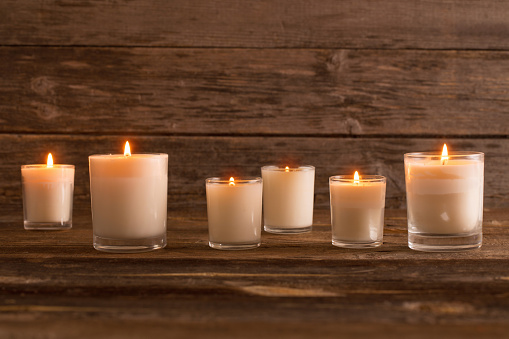Living in Colorado on a snowy and wintery afternoon, there can be something soothing about lighting some scented candles and filling your home with aromas of cinnamon, lavender or vanilla. Or, you could be tempted to use one of those scented plugins to fill your room with wonderful and fresh smells. In fact, we all do! But, as your Denver HVAC company, we want you to think twice before lighting that candle or plugging one in. There are real dangers of scented candles and plugins when it comes to your indoor air quality as recent studies show they are significant indoor pollutants. But, there are some great alternatives you can use to create wonderful and aromatic scents in your home.
Scented Candles and Their Dangers
So, apart from the clear fact that candles use fire, which can be dangerous in and of itself (especially if you have little kids), they are also an indoor smoke factory. Anything with a burning, open flame gives off smoke. And, while your fireplace has a chimney to draw the smoke out, most candle smoke simply gets stuck in your home and takes a long time to dissipate.
Also, many candles on the market, especially scented candles, burn toxic chemicals. Many candles are made with paraffin wax which is derived from petroleum. Then, they use synthetic fragrances that are also made with petroleum. When candle are burned, they emit toluene and benzene (both of which can cause cancer) as well as other hydrocarbon chemicals that can irritate respiratory tracts and trigger asthma. While you do not want to breathe in these toxins, they do build up, especially if your room is closed without ventilation.
Lastly, candles produce soot at a microscopic level that can build up deep in your lungs. And, scented candles tend to produce more soot than their unscented counterparts.
Candle Alternatives
Soy candles are an alternative to traditional candles and they last about 30% longer. They burn slower and cooler, are non-toxic and less likely to trigger allergies or asthma. Also, soy candles generally produce less soot.
Beeswax candles are also becoming very popular alternatives. Like soy candles, beeswax candles are less likely to trigger allergies as they generally do not produce toxins or soot when burned. But, do read the labels carefully, as some beeswax candle manufacturers have added paraffin which will give off toxins.
Things to Beware of with Scented Plugins
Many people use scented plugins in lieu of candles. However, the EPA has found that plugins can create a harmful smog inside homes through the reaction between the plugin fragrances—such as pine and limonene—and ozone. These reactions generate formaldehyde, which is a known carcinogen, and other compounds that create respiratory problems.
Scented Alternatives
Instead of using a plugin to create aromatic smells, we suggest using your stove. Put some fresh rosemary, lemon, cinnamon sticks, cloves, nutmeg or whatever you like, into some boiling water and then let simmer. In no time your home will be filled with wonderful smells, all toxin-free!
Potpourri is another alternative. Just place bulk herbs, dried flowers and spices in a bowl. Mix the potpourri around every couple of days, and it will keep your home smelling fantastic without releasing harmful chemicals in the air.
The best way, however, to remove odors and get that fresh smell, is to find a nice sunny day and open the windows. Let fresh air into your home for an hour or two with a good cross breeze and it will really air things out.
How to Use This Information
At Major, we take your indoor air quality very seriously. Part of maintaining good indoor quality is your furnace and air-conditioning systems. After all, they help circulate the air through your home. Keeping them properly maintained not only helps save money and keeps you warm (or cool), but it helps ensure your indoor air is kept clean. Call 303-424-1622 or schedule online for a free systems evaluation.

